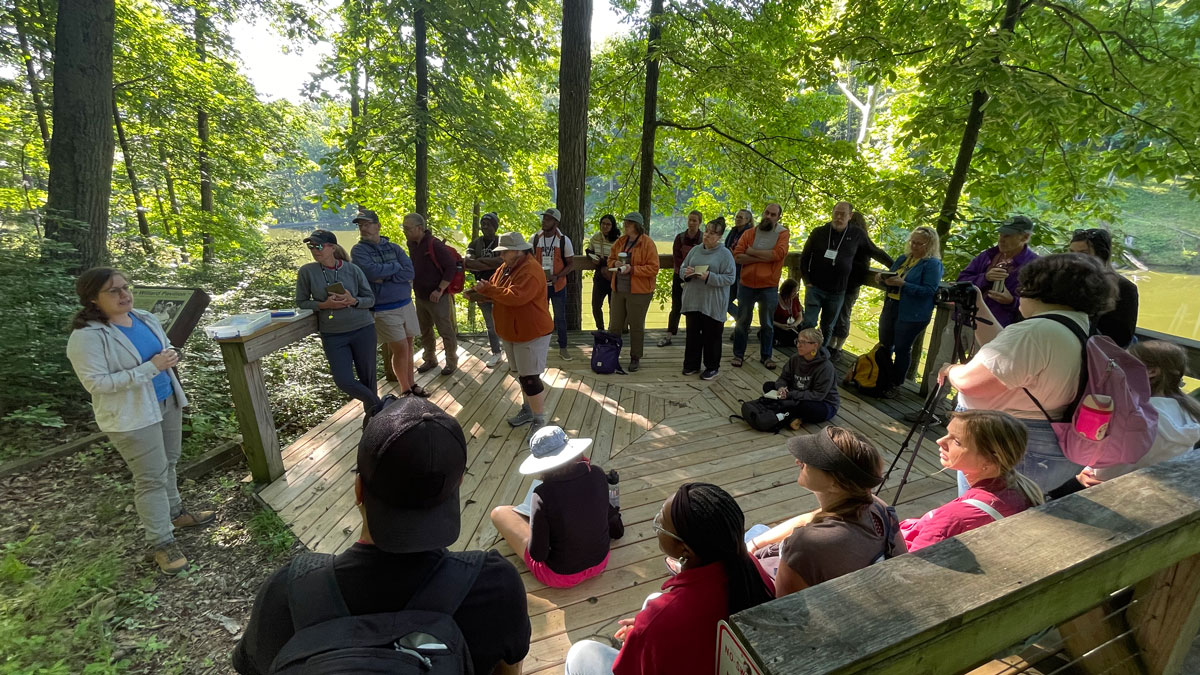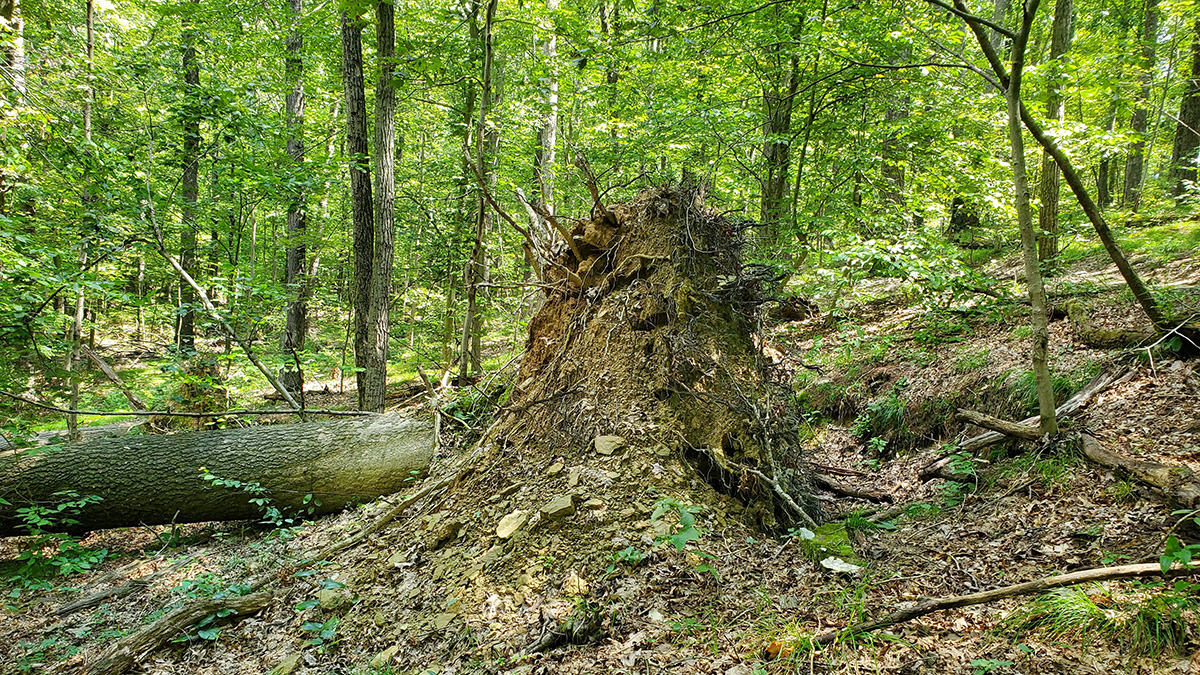Scientists and schoolteachers have teamed up to design training and classroom materials that help educators understand and teach the complex topic of climate change to tomorrow’s leaders.
Indiana
Posted inNews
Roughed-Up Hillsides Reveal Tree-Toppling Winds
Researchers are reading pockmarks in the forest floor to study the uprooting of trees in southern Indiana and estimate how fast winds howled through the forest in the past.
Posted inResearch Spotlights
New Theory Connects Tree Uprooting and Sediment Movement
Tree throw from extreme wind events plays an important role in the movement of sediment and erosion on forested hillslopes. A new theory offers a novel way to measure its impact.



